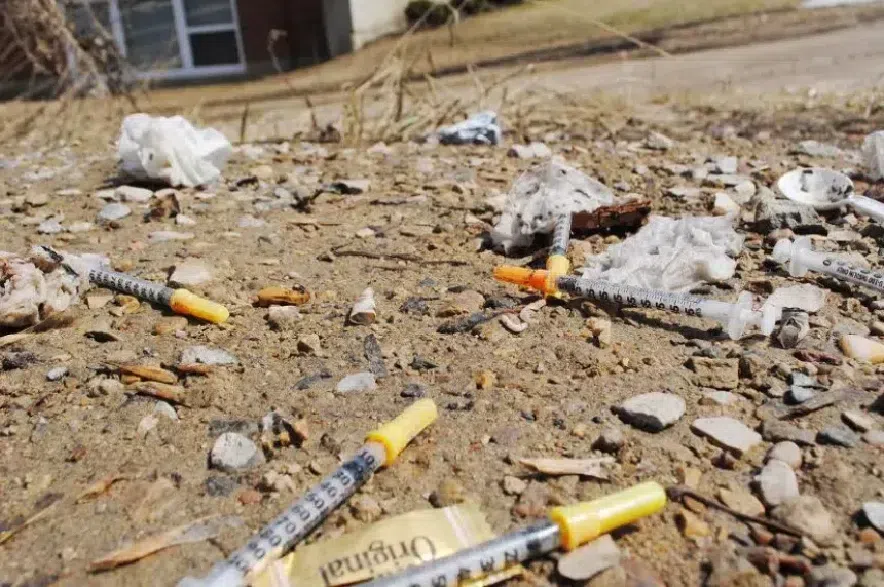One doesn’t have to go far to see the effects that drugs like fentanyl can have on a community.
But while it’s easy to see the effects on drug users, it can be harder to spot the effects that responding to frequent overdoses can have on emergency personnel.
Read more:
- Saskatoon sees 30 overdoses in three days, prompting health ministry warning
- The Evan Bray Show: Police sergeant discusses overdose crisis in Saskatoon
- Warning issued about dangerous red-orange fentanyl found in Saskatoon
Tyler Packham is a firefighter in Regina with more 24 years of experience. He recently joined the Evan Bray Show to discuss the impact responding to the rising number of overdoses is having on firefighters.
“It actually ties up a lot of our front-line apparatus to not respond to fires and stuff when that happens,” he said.
“So say No. 4 hall, which is by the Pasqua Hospital, that truck will roll out and then we’d have an empty station, which means another truck has to fill in for that station, which means people out of district.”
Listen to the full interview with Packham:
Packham said there have been some efforts to try to reduce the extra workload that overdose calls create.
“We’ve actually tried to release some of that strain by implementing a new unit called a Medical Response Unit, which is two of our primary care paramedics staffed on that, so they can respond to some of those issues and then respond to house fires to be there for us as well,” he said.
Only a few months ago, Saskatoon saw a major jump in overdoses. Over three days stretching from May 9-11, the Saskatchewan Ministry of Health said the city saw a total of 30 overdoses. Then, in June, the ministry issued a warning about a particularly dangerous batch of fentanyl that was discovered in the city, which included traces of benzodiazepines and xylazine.
During the same week, the ministry also issued an overdose alert for Regina after the city saw four suspected overdose deaths.
According to the ministry, many of the 54 suspected overdoses police reported in the Queen City between June 5 and June 12 required multiple doses of naloxone to revive the patients.
The rise in overdoses isn’t just straining resources; it’s also having an impact on the first responders.
“The calls that we do go on have actually changed our members a lot in the negative, which is something I’m worried about,” Packham said.
“There’s obviously an added cost to the department, but I would say the big thing is the mental fatigue and what it’s actually doing to some of our members.”
Packham said a lot of mental fatigue stems from responding to overdoses and the chaotic situation they can create.
“We’ve come into scenes where family members are just hysterical, screaming at us to help the patient, help their person. ‘They’re dying. They’re dying. You’re not doing anything,’” he said.
“They might wake up swinging or puking and mad that you wrecked their high,” Packham added.
“If you do it just right, sometimes they’re like, ‘Thank you very much.’ But that’s pretty rare.”
He said friends and family members can quickly switch from panic to anger during an overdose call.
“Those family members that were yelling and screaming at the start of it, now, all of a sudden their family member comes back and they’re not mad anymore that we’re not helping; they’re mad at them and screaming at them for doing the drugs,” said Packham.
“The reaction is ridiculous.”
To top off an already chaotic situation, Packham said firefighters frequently respond to overdose calls involving the same person, and those overdoses can take place multiple times in the same day.
“My personal record has been four times before lunch to the same address for the same call,” he said.











